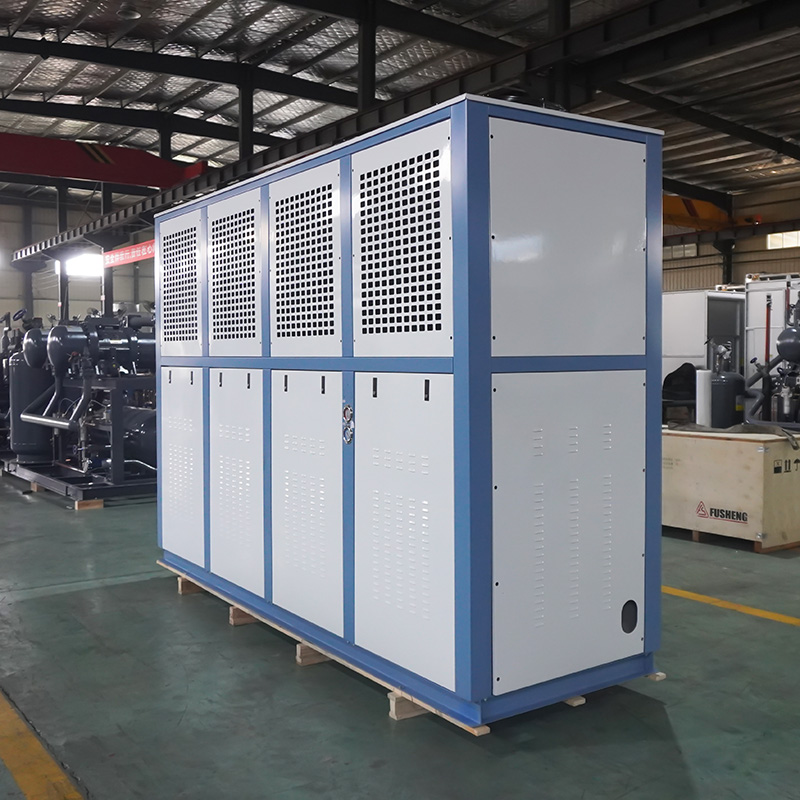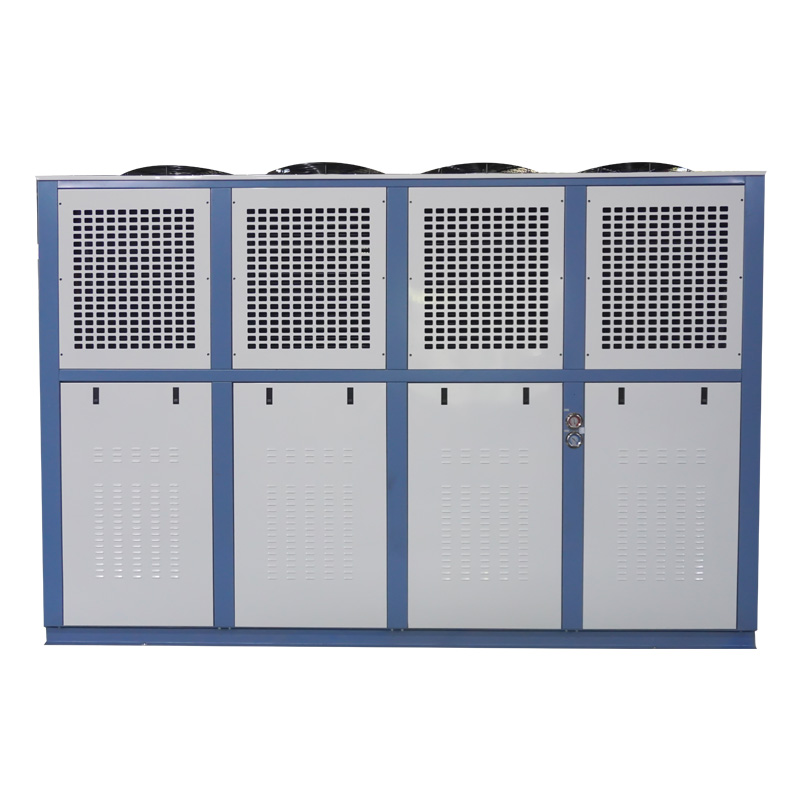It primarily consists of four main components: the compressor, air-cooled condenser, expansion valve, and evaporator.
Refrigeration Cycle:
Evaporation: The refrigerant absorbs heat from the chilled water in the evaporator, evaporating into a low-temperature, low-pressure gas.
Compression: The compressor compresses the low-temperature, low-pressure refrigerant gas into a high-temperature, high-pressure gas.
Condensation and Heat Dissipation: The high-temperature, high-pressure refrigerant gas enters the air-cooled condenser. A fan drives ambient air across the condenser coils, removing heat from the refrigerant and causing it to condense into a high-pressure liquid. This is the core difference from a "water-cooled unit" (which uses water and a cooling tower for heat dissipation).
Expansion: The high-pressure liquid refrigerant passes through the expansion valve, where it is throttled and becomes a low-temperature, low-pressure liquid-vapor mixture. It then re-enters the evaporator to absorb heat again, continuing the cycle.
Note: This translation uses standard HVAC terminology, clearly differentiates the cycle stages with bold headings, and explicitly highlights the key technical distinction between air-cooled and water-cooled systems in a parenthetical note.










